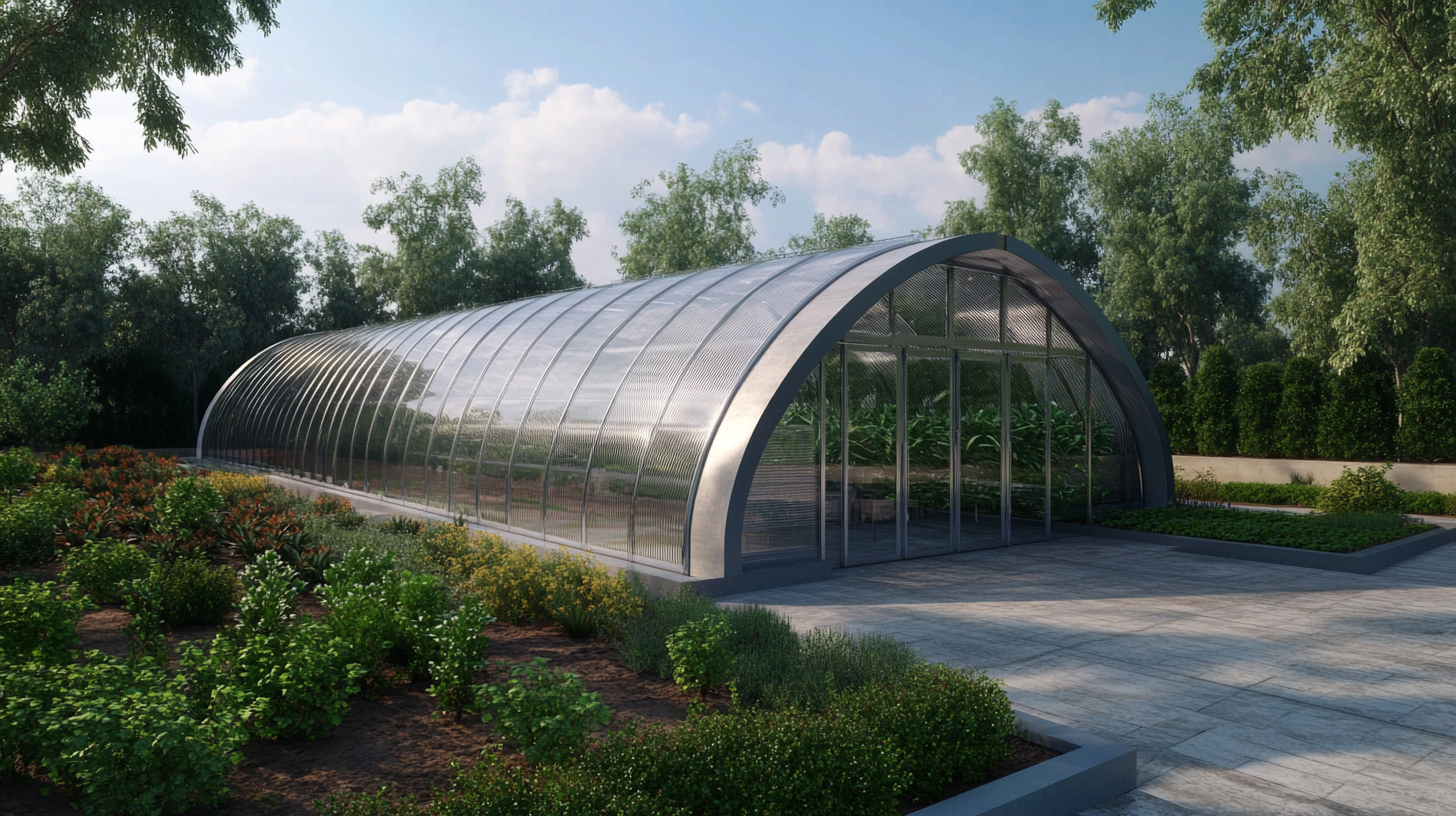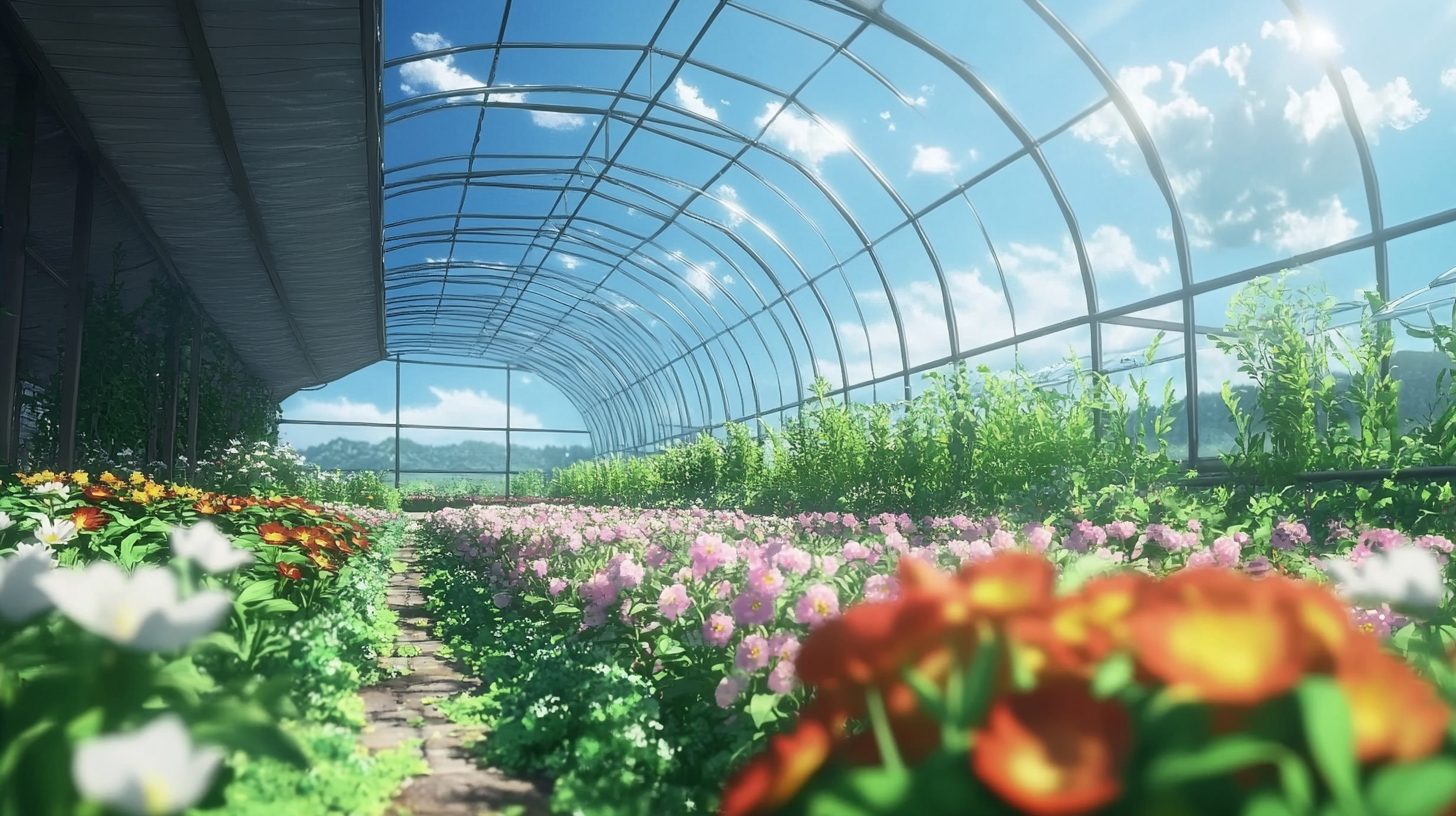
2025 Innovations in Multi-Span Greenhouses: How to Optimize Your Agriculture Strategy
As the agricultural landscape continues to evolve, the implementation of advanced technologies and innovative structures becomes crucial for maximizing productivity and sustainability. One of the most promising developments in this field is the Multi-Span Greenhouse, which offers a seamless integration of space, efficiency, and temperature control. These structures allow for the cultivation of a variety of crops in a controlled environment, leading to improved yields and reduced resource consumption. In 2025, we anticipate an array of innovations within Multi-Span Greenhouses that will revolutionize how we approach agriculture. From enhanced climate management systems to advanced irrigation techniques, optimizing your agricultural strategy with these cutting-edge solutions will not only bolster efficiency but also align with sustainability goals. In this blog, we will explore these innovations and provide insights on how to effectively integrate them into your farming practices for a fruitful and environmentally friendly future.

Emerging Technologies Revolutionizing Multi-Span Greenhouse Design
In recent years, the landscape of multi-span greenhouse design has undergone a significant transformation, driven by emerging technologies. According to a report from MarketsandMarkets, the global greenhouse market is projected to reach USD 39.4 billion by 2025, fueled by advancements in agricultural technology. One key innovation is the integration of smart sensors, which play a crucial role in climate control. These sensors continuously monitor temperature, humidity, and soil moisture, providing real-time data that enables farmers to optimize growing conditions and enhance crop yields by up to 30%.
Another groundbreaking development in multi-span greenhouses is the use of advanced materials, such as UV-blocking films and thermo-sensitive coatings. A study by the American Society of Agricultural and Biological Engineers highlights that these materials can improve energy efficiency and light distribution, ultimately leading to healthier crops. With the ability to retain warmth during colder months and reflect intense sunlight in peak summer, these innovations help in maintaining optimal growth conditions year-round, reducing overall energy costs by as much as 20%.
Furthermore, the adoption of hydroponic and aeroponic systems within multi-span greenhouses is revolutionizing sustainable agriculture practices. The Food and Agriculture Organization (FAO) reports that these soilless growing techniques can lead to 50% higher yield per square meter compared to traditional soil farming. This not only maximizes land usage but also minimizes water consumption by using up to 90% less water, making it a critical strategy in addressing global food security challenges.

Sustainable Practices to Maximize Crop Yields in Greenhouses
Sustainable practices in agriculture are increasingly crucial as we strive to maximize crop yields while minimizing environmental impact. In the context of multi-span greenhouses, innovative techniques can revolutionize how we approach food production. One effective strategy is the integration of advanced hydroponics systems, which utilize nutrient-rich water solutions to cultivate plants without soil. This method not only conserves water but also allows for precise control over nutrient delivery, resulting in healthier plants and higher yields.
Another promising avenue for enhancing sustainability in greenhouses is the use of renewable energy sources. By installing solar panels on greenhouse rooftops, farmers can harness sunlight to power their operations, reducing reliance on fossil fuels. Additionally, implementing energy-efficient lighting systems and climate control technologies can further cut energy consumption and create optimal growth conditions for crops. These practices not only enhance productivity but also contribute to the overall sustainability of agricultural practices, making it a win-win for both farmers and the planet.
2025 Innovations in Multi-Span Greenhouses: How to Optimize Your Agriculture Strategy
| Innovation | Description | Benefits | Sustainability Impact |
|---|---|---|---|
| Integrated Climate Control Systems | Advanced systems that regulate temperature, humidity, and light within the greenhouse. | Enhances crop growth and reduces energy consumption. | Minimizes carbon footprint and optimizes resource use. |
| Hydroponic and Aeroponic Systems | Soil-less growing techniques that utilize nutrient-rich water solutions. | Increases crop yields and reduces water usage. | Supports responsible water management and reduces land use. |
| Smart Irrigation Systems | Automated systems that use soil moisture sensors to optimize water use. | Provides the right amount of water to plants based on real-time data. | Conserves water and enhances sustainability of agricultural practices. |
| Vertical Farming Techniques | Utilizing vertical spaces to increase plant production area. | Maximizes yields per square foot and allows year-round farming. | Reduces land requirements and supports biodiversity. |
| Biodegradable Plant Pots | Containers made from biodegradable materials for seedlings. | Eliminates plastic waste and promotes healthy growth. | Supports sustainable waste management practices. |
Smart Irrigation Systems: Enhancing Water Efficiency in Agriculture
Smart irrigation systems are revolutionizing agricultural practices in 2025, providing innovative solutions to enhance water efficiency. According to a report by the Food and Agriculture Organization (FAO), nearly 70% of the world’s freshwater is used for agricultural irrigation. With water scarcity becoming a pressing global issue, implementing smart irrigation technology can help farmers reduce water consumption by up to 50%, drastically improving their sustainability and operational cost-effectiveness.
These advanced systems utilize sensors and automation to deliver precise amounts of water directly to the plant roots, eliminating the excess runoff associated with traditional irrigation methods. A study by the Irrigation Association highlighted that farms equipped with smart irrigation systems could see crop yields increase by as much as 20%. Furthermore, the integration of climate data into irrigation scheduling optimizes water usage based on real-time weather conditions, leading to significant resource savings. As agriculture continues to face the challenges of climate change and growing water demands, the adoption of smart irrigation systems will be critical for ensuring food security while preserving our most precious resources.
Integrating Renewable Energy Solutions for Eco-Friendly Greenhouses
As the agricultural sector increasingly embraces eco-friendly practices, the integration of renewable energy solutions into greenhouse operations is becoming essential. Renewable hydrogen stands out as a transformative resource, significantly reducing carbon footprints while providing a sustainable energy source for energy-intensive agricultural processes. This energy can power everything from heating systems to irrigation, streamlining operations with minimal environmental impact.
Recent advancements in bio-capture strategies highlight the potential for greenhouses to not only reduce greenhouse gas emissions but also to promote carbon sequestration. Integrating these strategies with renewable energy solutions can create a symbiotic relationship that enhances productivity and sustainability. For example, the smart application of agrivoltaics, which combines agricultural activities with solar energy harvesting, demonstrates how land can be utilized efficiently while generating renewable energy. This holistic approach to greenhouse management ensures that agriculture evolves in harmony with environmental stewardship, paving the way for resilient farming practices in the future.

Data-Driven Decision Making: Leveraging AI for Agricultural Optimization
The integration of artificial intelligence (AI) within agriculture is set to revolutionize how we approach farming in the face of pressing global challenges such as climate change, population growth, and resource scarcity. According to a recent report by the Food and Agriculture Organization (FAO), the worldwide population is projected to reach approximately 9.7 billion by 2050, requiring a staggering 70% increase in food production. This urgent need for enhanced agricultural output underscores the significance of data-driven decision-making facilitated by AI technologies.
One promising example of this innovation is Fermata, a startup focused on harnessing AI and computer vision to modernize horticulture. Recently securing $100,000 in Series A funding, Fermata aims to create a centralized platform that optimizes plant care by analyzing vast amounts of data to improve growth conditions and yield predictions. This kind of technology not only streamlines the farming process but also allows for real-time adjustments based on environmental factors, ultimately contributing to sustainable agricultural practices.
Moreover, the adoption of smart environmental monitoring tools powered by AI can precisely track soil moisture, nutrient levels, and climate variations, enabling farmers to make better-informed decisions. By leveraging these advanced technologies, the agriculture sector can minimize waste, increase efficiency, and significantly enhance food security in an ever-challenging landscape. As we move towards 2025, the effective implementation of AI-driven strategies will be key to optimizing agricultural outputs while safeguarding our planet.
